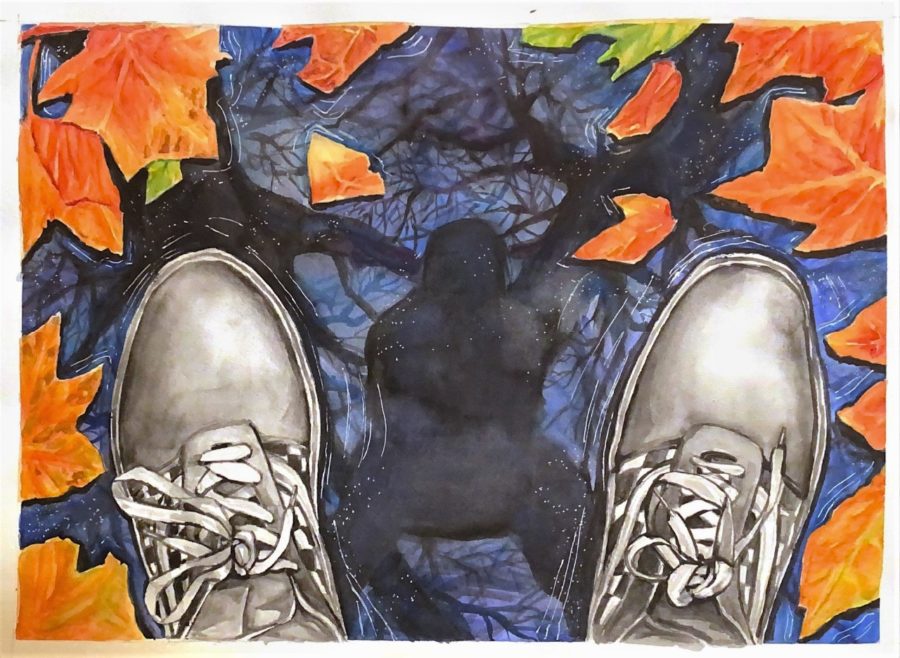Poet’s Pen: Rain, Rain, Go… Or Stay?
April 8, 2021
April showers bring various ideas for poets. Sometimes it is May flowers; other times, it is a sorrowful memory or a cathartic cleansing. For Henry Wadsworth Longfellow, the rain can bring both sadness and joy. Before examining Longfellow’s double-sided view of rain, let us first answer the question of who he was.
Longfellow was born on February 27, 1807, and lived during the Romantic period. He wrote lyric poems that explored a wide range of formats, from ballads and sonnets to heroic couplets to free verse. He often focused on morals and lessons, his favorite being to urge his readers to abandon fruitless material pursuits and embrace life as it is. Some of his most famous works include “Paul Revere’s Ride” and the epic poem “The Song of Hiawatha”; later in life he took to translating other poet’s works, including Dante Alighieri’s “Divine Comedy.” He quickly amassed a popularity during his lifetime that earned him a spot among the Fireside Poets of the late 19th century, though some criticized him for pandering to audiences.
This month, in the spirit of April showers, we will take a look at two very different poems about rain, both written by Longfellow. The first, titled “The Rainy Day,” explores rain in a somber light:
“The day is cold, and dark, and dreary;
It rains, and the wind is never weary;
The vine still clings to the mouldering wall,
But at every gust the dead leaves fall,
And the day is dark and dreary.
My life is cold, and dark, and dreary;
It rains, and the wind is never weary;
My thoughts still cling to the mouldering Past,
But the hopes of youth fall thick in the blast,
And the days are dark and dreary.
Be still, sad heart! and cease repining;
Behind the clouds is the sun still shining;
Thy fate is the common fate of all,
Into each life some rain must fall,
Some days must be dark and dreary.”
Here Longfellow describes rain as an unfavorable, though natural part in the course of life — a necessary pain, like mourning or crying. He uses nature and weather to indirectly describe his emotions by associating the rain with death and darkness. However, he also shows that the cycle of grief is natural by comparing it to natural processes like the death of leaves and the changing motion of wind. Though he turns it around in the end to look hopefully toward the coming of the sun, the rain remains a motif for dreary weariness.
The second poem, titled “Rain in Summer,” takes a starkly different approach. The piece is lengthy, but this excerpt gets most of his point across:
“How beautiful is the rain!
After the dust and heat,
In the broad and fiery street,
In the narrow lane,
How beautiful is the rain!
How it clatters along the roofs,
Like the tramp of hoofs
How it gushes and struggles out
From the throat of the overflowing spout!
Across the window-pane
It pours and pours;
And swift and wide,
With a muddy tide,
Like a river down the gutter roars
The rain, the welcome rain!
The sick man from his chamber looks
At the twisted brooks;
He can feel the cool
Breath of each little pool;
His fevered brain
Grows calm again,
And he breathes a blessing on the rain.”
Here Longfellow celebrates the rain. Instead of lamenting its ceaseless pitter-patter like in “The Rainy Day,” “Rain in Summer” praises the storm for its beauty. Interestingly, both poems show an appreciation for the cathartic nature of rain: both the mourning narrator of the first poem and the sick man in the second find the rain helps them to move through their hardships. More concretely, Longfellow describes the benefits of the rain in the excerpt in how the rain gives relief from the dry heat; following the end of the excerpt, he lists its other bounties, like watering crops and making puddles for schoolboys to jump in.
After having reviewed these two vastly different approaches, we return to the question: rain, rain, go or stay? If you ask Longfellow, it may depend on his mood today, but it’s certainly welcome to come again another day.
Excerpts taken from hwlongfellow.org.

